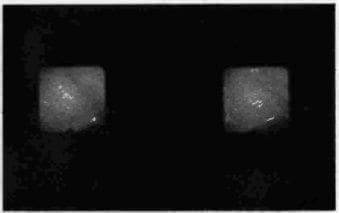“The artist should be a ‘shaman’, uniting the viewer
ith the sacredness and mystery of nature…”
Margaret Grimes, landscape painter, from
Fractals: Discovering a New Aesthetic of Science and
Nature, by John Briggs.
The mysteries of the universe take us on a journey into the unknown. All cultures have extolled the beauty, majesty and ingenuity of the universe, and man has stared in awe and bewilderment at nature. As, We seek explanations and create stories to explain nature. We create myths, magic and metaphors of the universe, embellish them with time and enshrine them with enough credibility to comfort us. We create comfortable and necessary belief systems to sustain us.
Our beliefs have changed over time but we are still left with the relics of them all.
Spyros Marketos and C. Papaeconomou describe magic as belonging to all times and to all people. Magicians were the first to explain the world. They surmised that supernatural forces were more threatening than natural phenomena to primitive man, and that the caregiver was first a priest and secondarily a physician. Spells, charms, talismans, amulets, etc., some still practised today, to them, illustrate the power of magic. Shamans -the word deriving from the Tungus people of Siberia -became the experts in exploring the world of spirit. They journeyed to the spirit world, met and conversed with the spirit beings, returning with their discoveries for the benefit of their fellows. Shamans travel the cosmos along a pillar or axis from the underworld to the sky.
They were the first time travellers and the first space travellers, free of the limitations af space, time and identity. In primitive societies the shaman was the priest, the witchdoctor and doctor. Orpheus, the first Greek shaman wandered the cosmos with his harp prophesying and protecting man from disease.
Philosophers disagree on what is philosophy but agree that Greek civilization around 6th century BC was the focus of a world wide stirring from 800 BC – 200 BC.The Greek definition, “the love of wisdom” made Thales of Miletus probably the first wise man, a practical thinker seeking knowledge of the world and the stars, and eschewing myth. Greek philosophy sought to disentangle science and magic, and out of the physician philosophers emerged Democritus, seeking the uncuttable atomos of matter, and Hippocrates, whose new medicine, based on observation and natural causes, became the source of Western Science and Western Medicine.
Science seeks a rational explanation of the universe. P. Davies describes this in The Mind of God,saying:
“The Greek philosopher sought a means to formalize human reasoning by providing unassailable rules of logical deduction. By adhering to agreed procedures of rational argument, these philosophers hoped to remove the muddle, misunderstanding and dispute that so characterize human affairs. The ultimate goal of this scheme was to arrive at a set of assumptions, or axioms, which all reasonable men and women would accept, and from which the resolution of all conflicts would flow”. They fell quite short.
Science seeks its understanding of life’s mysteries by systematically studying nature objectively, through the scientific method -experiment, observation, deduction, hypothesis,a nd verification.
Modern science has put man on the moon, and men and women to walk in space, and seeks the absolute uncuttable atomos of Democritus, a Higgs boson smaller than a quark. It however gives us the new physics with a blurring of reality,and virtual particles taking science close to metaphysics.Physics answers how, metaphysics-why. Gerhard Staguhn describes this relationship in his book God’s Laughter.
Man and his Cosmos, with these comments, “Not since Greek antiquity have science and philosophy been as close as in our century of quantum physics and relativity. But whether an ailing philosophy can be revived by science’s artificial respiration remains to be seen. At times it seems that modern physics is the last serious advocate of the mythical and the metaphysical. Like religion,i t is governed by dreams of the absolute”.
Religion explains mysteries.
The supernatural governs the world and has no limitations. Science has limitations,and cannot explain everything. Everything starts with some assumptions,science with the laws of nature.Paul Davies explains, “Sooner or later we all have to accept something as given, whether it is God, or logic, or a set of laws, or some other foundation of existence. Thus ‘ultimate’ questions will always lie beyond the scope of empirical science as it is usually defined… Through my scientific work I have come to believe more and more strongly that the physical universe is put together with an ingenuity so astonishing that I cannot accept it merely as a brute fact. There must, it seems to me, be a deeper level of explanation. Whether one wishes to call that deeper level `God’is a matter of taste and definition”.
And where does art fit finto all of this?Landscape painter Margaret Grimes says she believes the artist should be a “shaman”uniting the viewer with the sacredness and mystery of nature, helping viewers rediscover a deep immersion in the natural world. She uses fractal imagery in her work and sees philosophical implications in fractal composition with “a sense of each thing in it being of equal importance,… one life form isn’t necessarily more valuable than another”.
Art relies on reflectaphors, like metaphors, to create a tension, a nuance and subtlety providing similarity and differences, enough to jar the brain into wonder, awe, perplexity and a sense of unexpected truth and beauty.
It resists habituation and is always fresh with something new seen everytime we experience a truly great work of art. J. Briggs summarizes this in Fractals, The Pattern of Chaos, thus, “Each great work of art is a kind of microcosm or mirror of the universe.This means that each great artist’s personal vision must also retlect the whole, which means reflecting the mysteries, chaos and order of life itself.”The technical art of fractals we all have seen.These computer generated or “created” images are hauntingly beautiful,and thus art -but not true art.However, art reflects the mysterious chaos and order of life itself, taking us back according to Carlos Ginsberg, “to connect the unique spirit of a time with a primordial mysterious insight that lies deeper than chaos”. Art is primordial, with primitive man etching images on cave walls, and even some science as medicine etched on these ancient walls.
Medicine can not be true art however. The “almost art”of chaos is the art of medicine. Medicine is a strange attractor with scientific principles, – Hippocrates-and a tradition of healing, providing guidelines, a framework, patterns and rules that must be observed. We are allowed some creativity and some unpredictability within this determined range. If medicine were true art we would have no limits. Chaos as the art of medicine allows this strange attractor to exhibit some variability, with creativity and openness in a necessarily conservative field, constrained by experience, scientific principles, and the teaching of others.
Art, philosophy, science, myth, magic and religion are all related, as someone’s attempt to solve life’s mysteries and explain the world, representing their shadows of reality.
lt all reflects at the fundamental level however, chaos,a more fundamental aesthetic of life.
Roy Willis in World Mythology describes the shaman:
Exploring other worlds bringing back knowledge, with these words. “The shaman’s work resembles in some ways that of the modem scientist, in that it is based on the accumulation of experience gained at first hand by experiment. it is also, like that of the priest, concerned with the domain of spirit. Yet the shaman also possesses a kind of creative freedom which is characteristic of neither scientist nor priest in our society, but rather belongs to the artist”.
In our quest for knowledge we may be barred from ultimate explanation by the very rules of reasoning. An Austrian mathematician in 1931 proved that mathematical statements exist for which no systematic procedure could determine whether they are true or false, undermining logic itself. There will always be true statements that cannot be proved to be true.
Paul Davies elaborates on this in The Mind of God, saying, “We encounter once again, the Gödelian limits to rational thought -the mystery at the end of the universe. We cannot know Cantor’s Absolute, or any other Absolute, by rational means”. Unless we “believe”.Or maybe sometimes things just happen and rather than trying to explain the unexplainable we enjoy the mystery. Goethe says,”The scientist should leave the primary phenomena in their external serenity and glory untouched…joyful admiration is not incited by the obsession to explain.”
Maybe we take answers and our science too seriously.
Maybe if we lighten up and use chaos to put some art back into science, we may be better off. Gerhard Staguhn reminds to us of this, saying, “The crisis of modern science may be connected to its failure to introduce humour as a universal constant of nature.Research is done too obsessively and with too little humour, governed as it is by the false belief that human existence per se can be reduced to a formula.
I have a dark feeling, though, that a humorous quantum of action is hidden in nature that refuses to be mathematically defined. It guarantees that behind every secret that man regards as the ultimate one,another ‘ultimate’ secret will appear, each time accompanied by an engaging,not at all scornful, laughter.
But it will only be audible for, those who are endowed with truly ‘spiritual’ears”. Gerhard Staguhn reminds us also in God’s Laughter. Man and His Cosmos, of a Jewish proverb that says “Man thinks and God Laughs.”For good reason.







